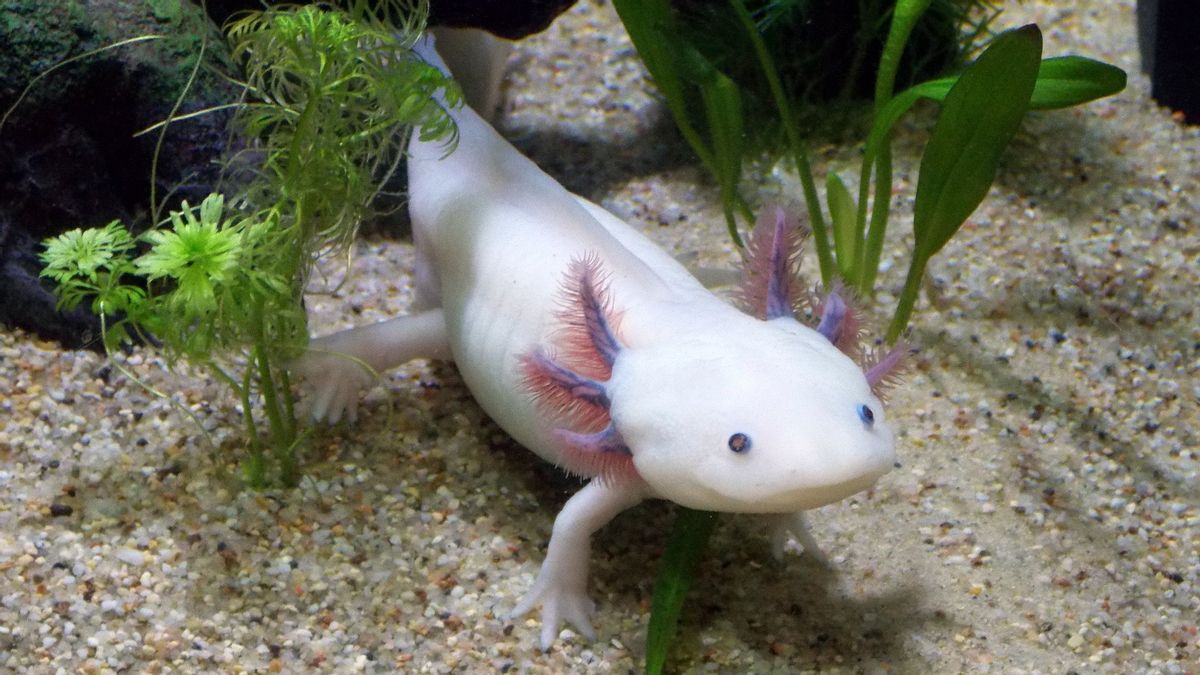JAKARTA - A new museum and conservation center dedicated to Mexico's endangered axolotl basander, highlights the extraordinary amphibious story that has caught the attention of scientists and the public.
With an impressive ability to heal himself, the axolotl salander (said ah-sho-LO-tul) was exhibited at the exhibition, which opened Saturday at the Chapultepec Zoo, Mexico City.
The museum aims to raise awareness of the animal, which only comes from Mexico and is decreasing in the wild due to a terrible threat to its natural habitat.
For decades, researchers have admired how axolotl can regenerate amputated limbs and damaged body tissue, even its heart and brain. Scientists have also documented its ability to breathe with the lungs and insang, and absorb oxygen through its skin, making it very susceptible to polluted water.
"They are one of the few animals that can regenerate the skin, muscles, bones, blood vessels, nerves, heart, brain," said Fernando Gu, head of wildlife conservation at the zoo.
"The very important part of this space is environmental education," said Gual about the new museum exhibition, workshop and laboratory.
In the Aztec legend, the desperate rebel god Xolotl turned himself into an axolotl to hide and avoid the sacrifices of fellow gods.
However, he was still found, captured and killed. The animal also became a favorite on the desk of Aztec kings.
While the axolotl, originating from Mexico City's southern Xochimilco District, is very well known, Gu points to 16 other types of axolotl that also refer to Mexico as home, each "such as a wet land ambassador".
Axolotl once thrived in the muddy canal of Xochimilco, the only remaining part of Venice's former vast waterway system since the Aztec era.
However, the expansion of the city, contaminated water and non-original fish with young axolotl tastes has led to nearly total salapander extinction, according to a population survey.
Even so, Xochimilco still holds nearly 11 percent of Mexico's biodiversity, according to Gual, with 370 amphibious species the country ranks 5th in the world.
When the museum opened to its first visitors, the status of the celebrity axolotl was easily recognized.
"Actually I'm very, very, very, very happy to be able to see how they eat, how they live, how are they doing," said a visitor named Fernando while showing off a small axolotl tattoo on his arm.
The English, Chinese, Japanese, Arabic, and French versions are automatically generated by the AI. So there may still be inaccuracies in translating, please always see Indonesian as our main language. (system supported by DigitalSiber.id)













